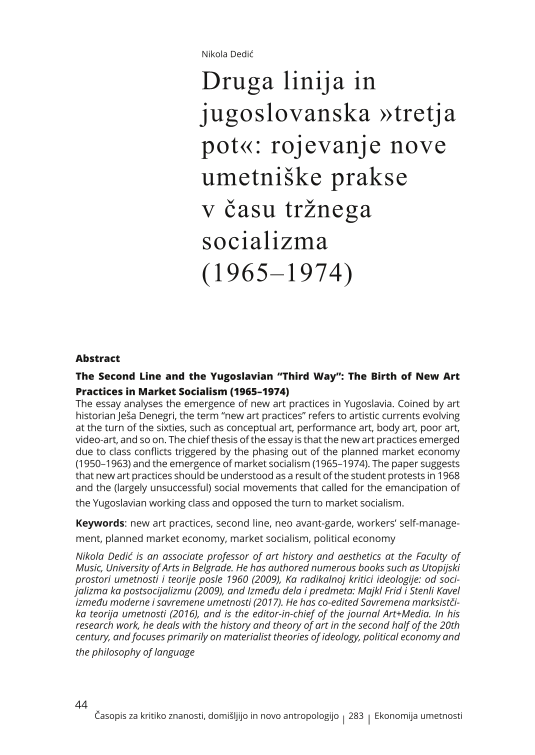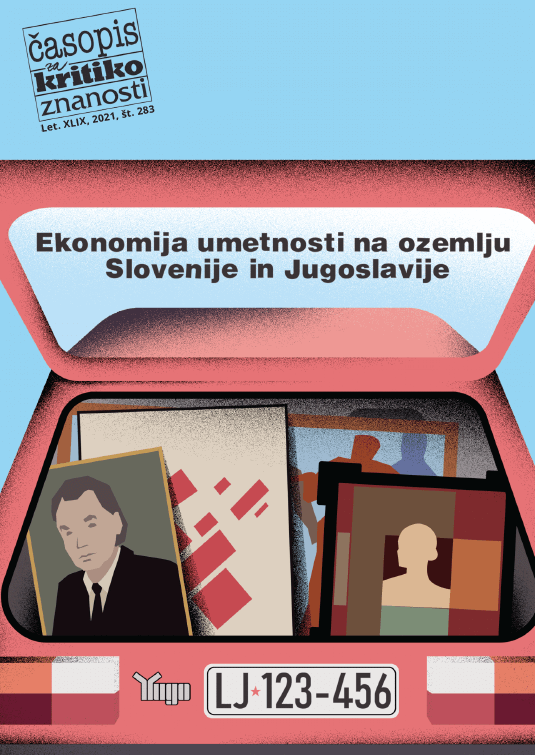The essay analyses the emergence of new art practices in Yugoslavia. Coined by art historian Ješa Denegri, the term “new art practices” refers to artistic currents evolving at the turn of the sixties, such as conceptual art, performance art, body art, poor art, video-art, and so on. The chief thesis of the essay is that the new art practices emerged due to class conflicts triggered by the phasing out of the planned market economy (1950–1963) and the emergence of market socialism (1965–1974). The paper suggests that new art practices should be understood as a result of the student protests in 1968 and the (largely unsuccessful) social movements that called for the emancipation of the Yugoslavian working class and opposed the turn to market socialism.




